BY JANET STEINBERG
I am often
asked, “What is your favorite museum?” The answer is simple…my
favorite museum is the world!
asked, “What is your favorite museum?” The answer is simple…my
favorite museum is the world!
This amazing world that we live in is an
open-air museum, filled with fascinating structures created by world-renowned
architects. When traveling around the world, I make it a point to
experience as many architectural masterpieces as possible. They come
in a variety of amazing shapes and sizes, from medieval to
modern. Allow me to share with you a few intriguing structures that,
in reality, are museum-quality, larger-than-life, sculptures.
open-air museum, filled with fascinating structures created by world-renowned
architects. When traveling around the world, I make it a point to
experience as many architectural masterpieces as possible. They come
in a variety of amazing shapes and sizes, from medieval to
modern. Allow me to share with you a few intriguing structures that,
in reality, are museum-quality, larger-than-life, sculptures.
MUSEO GUGGENHEIM
BILBAO: From a
distance, the splendid bizarrely shaped $100-million Guggenheim Museum of
Modern Art in Bilbao, Spain looked like a massive steel sculpture. And then,
all of a sudden, there it was…renowned architect Frank Gehry’s masterpiece in
flowing titanium and limestone. Gehry described his building, on the
banks of the Nervion River, as a ship that has run aground. The museum,
which opened in 1997, reflects Bilbao’s heritage with its suggestion of maritime
shapes and sails. Others have likened the silhouette of
Bilbao’s Guggenheim to a roller coaster, a mermaid, a waterfall a hula
girl, and a fish. The building is covered with over 35,OOO titanium
tiles and pieces of glass strategically placed to catch the natural
light. Maman, Louise Bourgeois’ huge bronze spider,
stands in front of the museum.
BILBAO: From a
distance, the splendid bizarrely shaped $100-million Guggenheim Museum of
Modern Art in Bilbao, Spain looked like a massive steel sculpture. And then,
all of a sudden, there it was…renowned architect Frank Gehry’s masterpiece in
flowing titanium and limestone. Gehry described his building, on the
banks of the Nervion River, as a ship that has run aground. The museum,
which opened in 1997, reflects Bilbao’s heritage with its suggestion of maritime
shapes and sails. Others have likened the silhouette of
Bilbao’s Guggenheim to a roller coaster, a mermaid, a waterfall a hula
girl, and a fish. The building is covered with over 35,OOO titanium
tiles and pieces of glass strategically placed to catch the natural
light. Maman, Louise Bourgeois’ huge bronze spider,
stands in front of the museum.
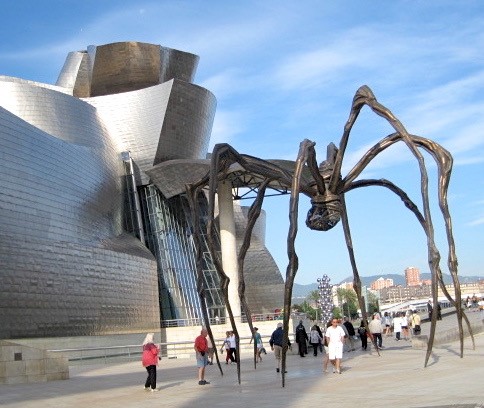 |
| MAMAN, A HUGE BRONZE SPIDER, STANDS IN FRONT OF THE MUSEUM |
Puppy, Jeff Koon’s 1992 stalwart floral
sculpture standing guard opposite the museum, is the Guggenheim’s mascot.
Constructed of stainless steel, soil, flowering plants, and an internal
irrigation system, this humongous West Highland White Terrier topiary is
literally still growing.
sculpture standing guard opposite the museum, is the Guggenheim’s mascot.
Constructed of stainless steel, soil, flowering plants, and an internal
irrigation system, this humongous West Highland White Terrier topiary is
literally still growing.
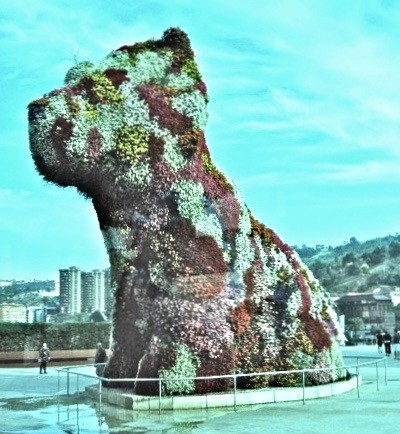 |
| PUPPY, THE GUGGENHEIM’S FLOWER MASCOT |
THE BINOCULARS
BUILDING: The Main Street facade of this
Postmodern commercial building, located in the Venice area of Los Angeles,
California incorporates the architectural genius of Frank Gehry with the 1991
public artwork “Giant Binoculars” by Claes Oldenburg and Coosje van
Bruggen. The massive 45-foot high cement and plaster sculpture frames
both the pedestrian and vehicle entrances to the building. Gehry turned art
into architecture when he decided to use the work of Oldenburg and his wife to
connect the two office buildings he was designing.
BUILDING: The Main Street facade of this
Postmodern commercial building, located in the Venice area of Los Angeles,
California incorporates the architectural genius of Frank Gehry with the 1991
public artwork “Giant Binoculars” by Claes Oldenburg and Coosje van
Bruggen. The massive 45-foot high cement and plaster sculpture frames
both the pedestrian and vehicle entrances to the building. Gehry turned art
into architecture when he decided to use the work of Oldenburg and his wife to
connect the two office buildings he was designing.
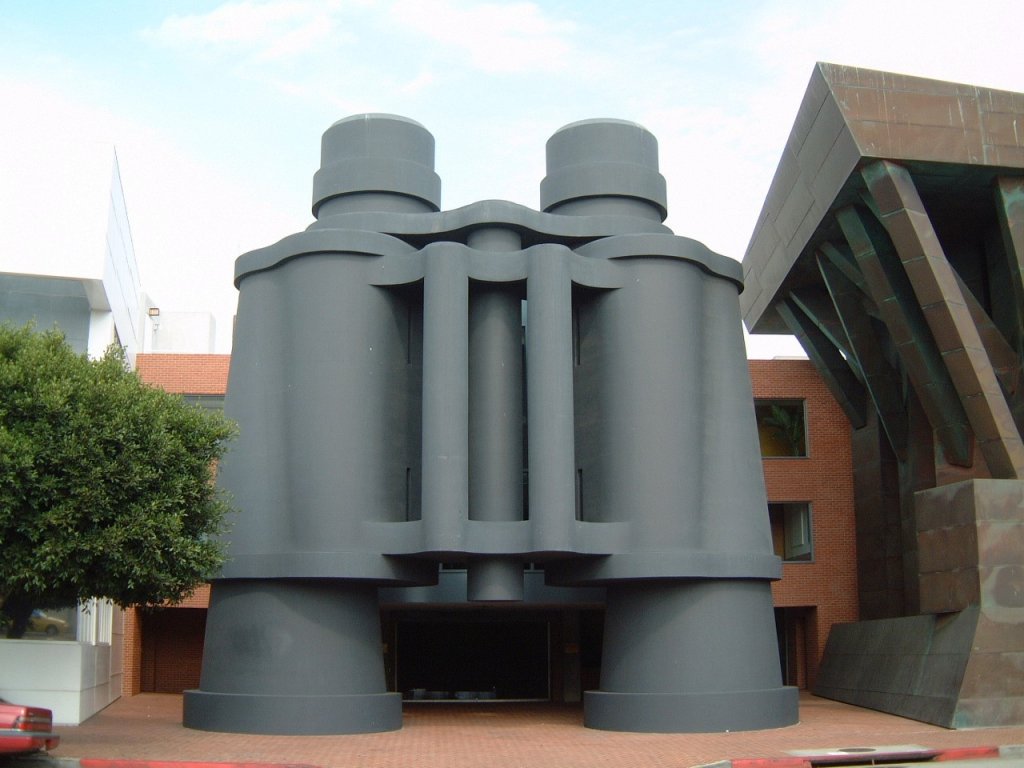 |
| THE BINOCULARS BUILDING |
HOTEL DEL CORONADO: The stretch of Southern California, from Los Angeles to San
Diego/Coronado, has been called the American Riviera and the Victorian-style
Hotel del Coronado may well be the jewel in its crown. This National
Historic Landmark, a rambling white clapboard legend with red-peaked roof,
crimson turrets, and lazy verandas, is said to be “one-third sun, one-third
sand, one-third fairy tale”. The Hotel Del Coronado has sheltered international
royalty, politicians, Hollywood celebrities, and the rich and famous since
1888. Ten U.S. presidents, from Benjamin Harrison to Bill Clinton, have
visited the Del. Publisher Rand McNally credits The Del as enjoying “more
fame and historical significance than perhaps any hotel in North America”.
Diego/Coronado, has been called the American Riviera and the Victorian-style
Hotel del Coronado may well be the jewel in its crown. This National
Historic Landmark, a rambling white clapboard legend with red-peaked roof,
crimson turrets, and lazy verandas, is said to be “one-third sun, one-third
sand, one-third fairy tale”. The Hotel Del Coronado has sheltered international
royalty, politicians, Hollywood celebrities, and the rich and famous since
1888. Ten U.S. presidents, from Benjamin Harrison to Bill Clinton, have
visited the Del. Publisher Rand McNally credits The Del as enjoying “more
fame and historical significance than perhaps any hotel in North America”.
In 1958, the Del became the backdrop for
the shenanigans of Marilyn Monroe, Tony Curtis, Jack Lemmon, and Joe E. Brown,
when they filmed “Some Like It Hot”. Looking out over the Pacific
Ocean from the hotel, one can almost see Marilyn and Tony toasting their
champagne flutes as they conned each other on Joe E. Brown’s yacht.
the shenanigans of Marilyn Monroe, Tony Curtis, Jack Lemmon, and Joe E. Brown,
when they filmed “Some Like It Hot”. Looking out over the Pacific
Ocean from the hotel, one can almost see Marilyn and Tony toasting their
champagne flutes as they conned each other on Joe E. Brown’s yacht.
 |
| THE HISTORIC “DEL” |
LIBRARY OF CELSUS: A
25-minute drive through the Asia Minor countryside from Kusadasi, Turkey
(pronounced koo-SHAHD-ah-sea) a lovely town on the Aegean Sea, will bring you
to the fabled remains of the ancient city of Ephesus. Walking along the
blazing white marble Arcadian Way, one might envision Charlton Heston gliding
through the ancient ruins in his chariot. Behind a large marble
courtyard rises the Library of Celsus, the third largest library in the ancient
world. Restorations of this beautifully preserved edifice, adorned with columns
and statues, began in 1970 and continued through 1978. An inauguration
ceremony was held on April 29, 1978 and the library was opened to visitors
after 1716 years.
25-minute drive through the Asia Minor countryside from Kusadasi, Turkey
(pronounced koo-SHAHD-ah-sea) a lovely town on the Aegean Sea, will bring you
to the fabled remains of the ancient city of Ephesus. Walking along the
blazing white marble Arcadian Way, one might envision Charlton Heston gliding
through the ancient ruins in his chariot. Behind a large marble
courtyard rises the Library of Celsus, the third largest library in the ancient
world. Restorations of this beautifully preserved edifice, adorned with columns
and statues, began in 1970 and continued through 1978. An inauguration
ceremony was held on April 29, 1978 and the library was opened to visitors
after 1716 years.
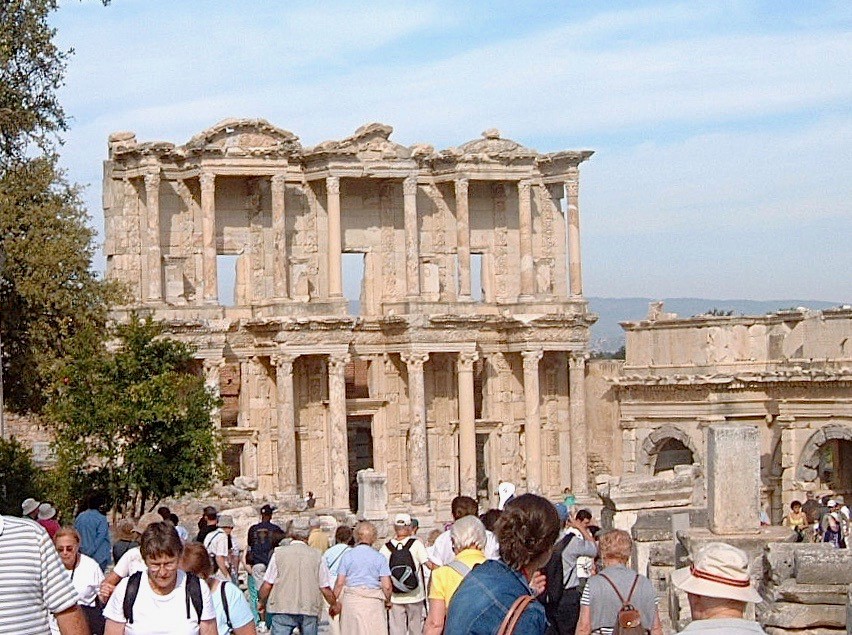 |
| THE LIBRARY OF CELSUS |
THE REICHSTAG: Berlin Germany’s Reichstag, the seat of Germany’s
Parliament, originally opened in 1894. After the reunification of
Germany, the building was fully restored by internationally renowned architect
Sir Norman Foster. Completed in 1999, the restoration features an iconic
large glass dome that has a 360-degree view of the surrounding cityscape.
Lunch in the restaurant at the top of the Reichstag is overpriced, but worth it
just for the view. Outside of the Reichstag is a memorial to the 96
Reichstag members of opposition parties killed by the Nazis.
Parliament, originally opened in 1894. After the reunification of
Germany, the building was fully restored by internationally renowned architect
Sir Norman Foster. Completed in 1999, the restoration features an iconic
large glass dome that has a 360-degree view of the surrounding cityscape.
Lunch in the restaurant at the top of the Reichstag is overpriced, but worth it
just for the view. Outside of the Reichstag is a memorial to the 96
Reichstag members of opposition parties killed by the Nazis.
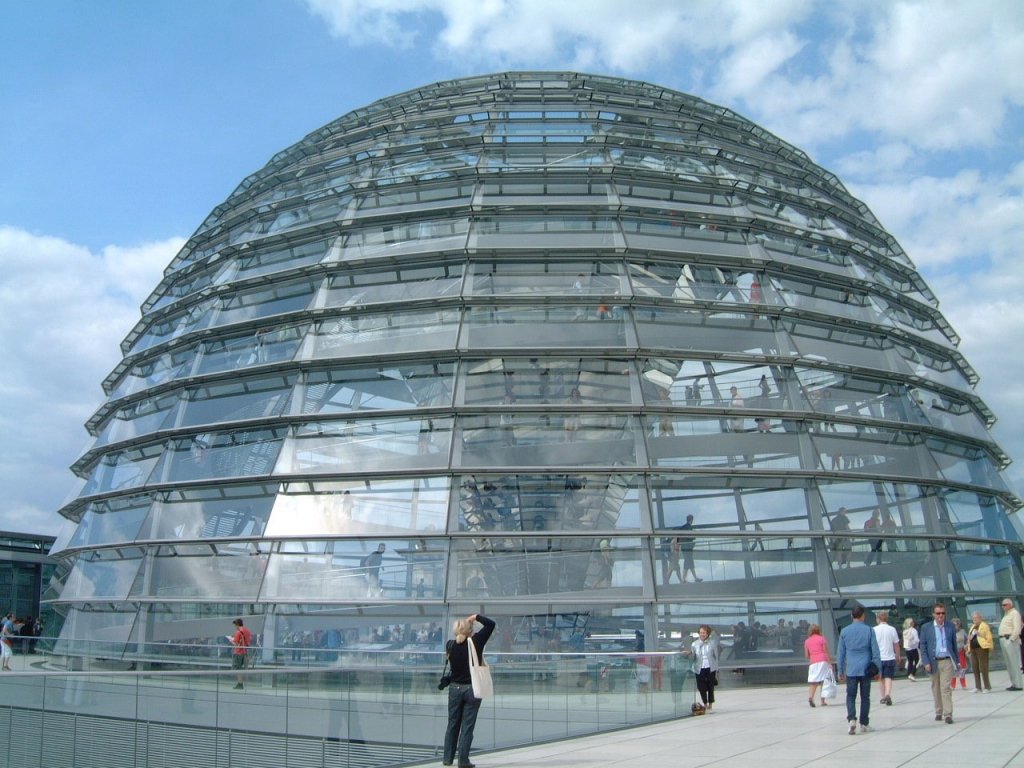 |
| SIR NORMAN FOSTER’S GLASS DOME ATOP THE REICHSTAG |
SAGRADA FAMILIA: Barcelona Spain’s Temple Expiatori de la
Sagrada Familia was initiated by the world-renowned Catalan architect
Antonio Gaudi in 1882 and has not yet been completed. People of all faiths
flock to Barcelona to visit this “Church of the Sacred Family” with its surreal
spires, said to resemble a melting wedding cake. Although Gaudi never
lived to see his dream come to fruition a group of architects following Gaudi’s
design, have brought the west facade to an advanced stage of construction.
Route Gaudi, an architectural tour of the works of this pioneer in the
Modernist Movement of Architecture, also includes Gaudi’s La Pedrera, Casa Batlló, and Parc
Guell.
Sagrada Familia was initiated by the world-renowned Catalan architect
Antonio Gaudi in 1882 and has not yet been completed. People of all faiths
flock to Barcelona to visit this “Church of the Sacred Family” with its surreal
spires, said to resemble a melting wedding cake. Although Gaudi never
lived to see his dream come to fruition a group of architects following Gaudi’s
design, have brought the west facade to an advanced stage of construction.
Route Gaudi, an architectural tour of the works of this pioneer in the
Modernist Movement of Architecture, also includes Gaudi’s La Pedrera, Casa Batlló, and Parc
Guell.
 |
GAUDI’S SAGRADA FAMILIA |
Between 1900 and 1904, Gaudi built the surrealistic Parc
Guell, an architectural extravaganza that has been compared to Dorothy’s “Oz”
and Alice’s “Wonderland”. The creative magic of this eccentric
architect is exemplified in this park where visitors are greeted by a curvy
pink house (Casa-Museu Gaudi), a grinning mosaic frog, and a pavilion that is
supported by mushroom-like columns.
Guell, an architectural extravaganza that has been compared to Dorothy’s “Oz”
and Alice’s “Wonderland”. The creative magic of this eccentric
architect is exemplified in this park where visitors are greeted by a curvy
pink house (Casa-Museu Gaudi), a grinning mosaic frog, and a pavilion that is
supported by mushroom-like columns.
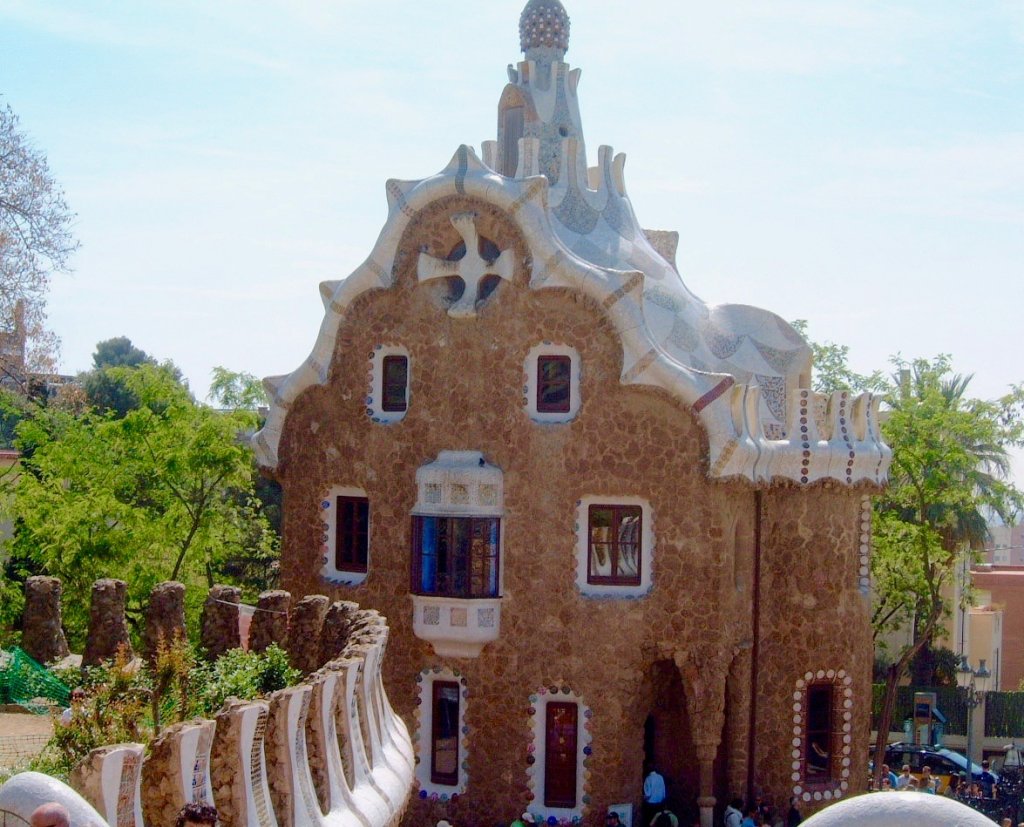 |
| GAUDI’S CASA-MUSEU GAUDI |
FRED AND GINGER: In The Czech Republic City Of Prague,
Wenceslas Square (more of a long boulevard than a square) is the location of
“Fred and Ginger” (The “Dancing House”) named after the famous dancers Fred
Astaire and Ginger Rogers. This ultra-contemporary, once-controversial,
building, whose twirling twin towers appear to be dancing, was awarded the Best
Design of 1996 prize by Time Magazine. Another of architect Frank Gehry’s
designs, the swaybacked structure is next to two Art Nouveau houses built by
the grandfather of the late Václav Havel who served as the last President of Czechoslovakia from 1989 until the dissolution of Czechoslovakia in 1992, and as the first President of
the Czech Republic from 1993 to
2003.
Wenceslas Square (more of a long boulevard than a square) is the location of
“Fred and Ginger” (The “Dancing House”) named after the famous dancers Fred
Astaire and Ginger Rogers. This ultra-contemporary, once-controversial,
building, whose twirling twin towers appear to be dancing, was awarded the Best
Design of 1996 prize by Time Magazine. Another of architect Frank Gehry’s
designs, the swaybacked structure is next to two Art Nouveau houses built by
the grandfather of the late Václav Havel who served as the last President of Czechoslovakia from 1989 until the dissolution of Czechoslovakia in 1992, and as the first President of
the Czech Republic from 1993 to
2003.
Czech it out!
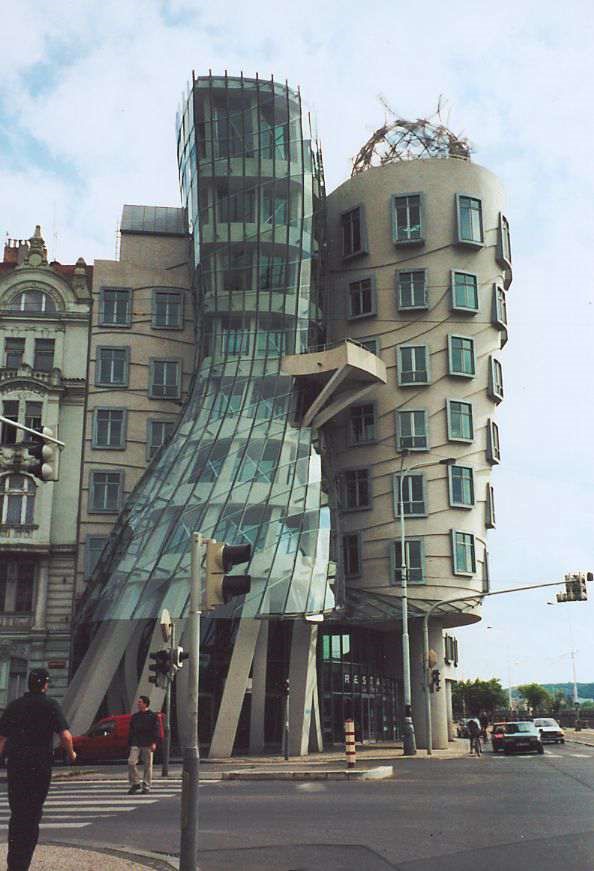 |
| FRED AND GINGER…THE DANCING HOUSE |
TEXT AND PHOTOS BY JANET STEINBERG
JANET STEINBERG is the winner of 43 national Travel
Writing Awards and is a Travel Consultant with THE TRAVEL AUTHORITY in
Mariemont, Ohio.
JANET STEINBERG is the winner of 43 national Travel
Writing Awards and is a Travel Consultant with THE TRAVEL AUTHORITY in
Mariemont, Ohio.
